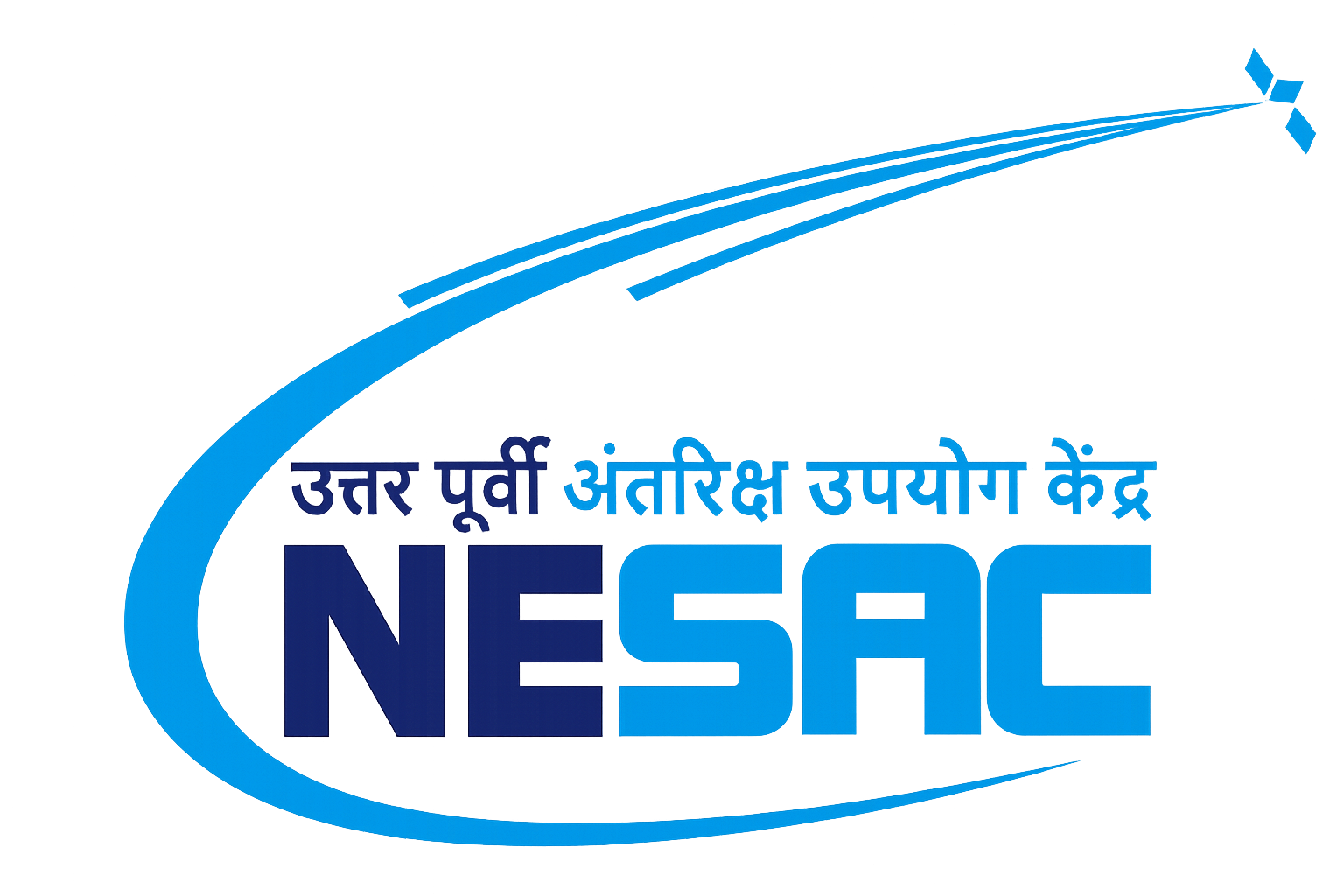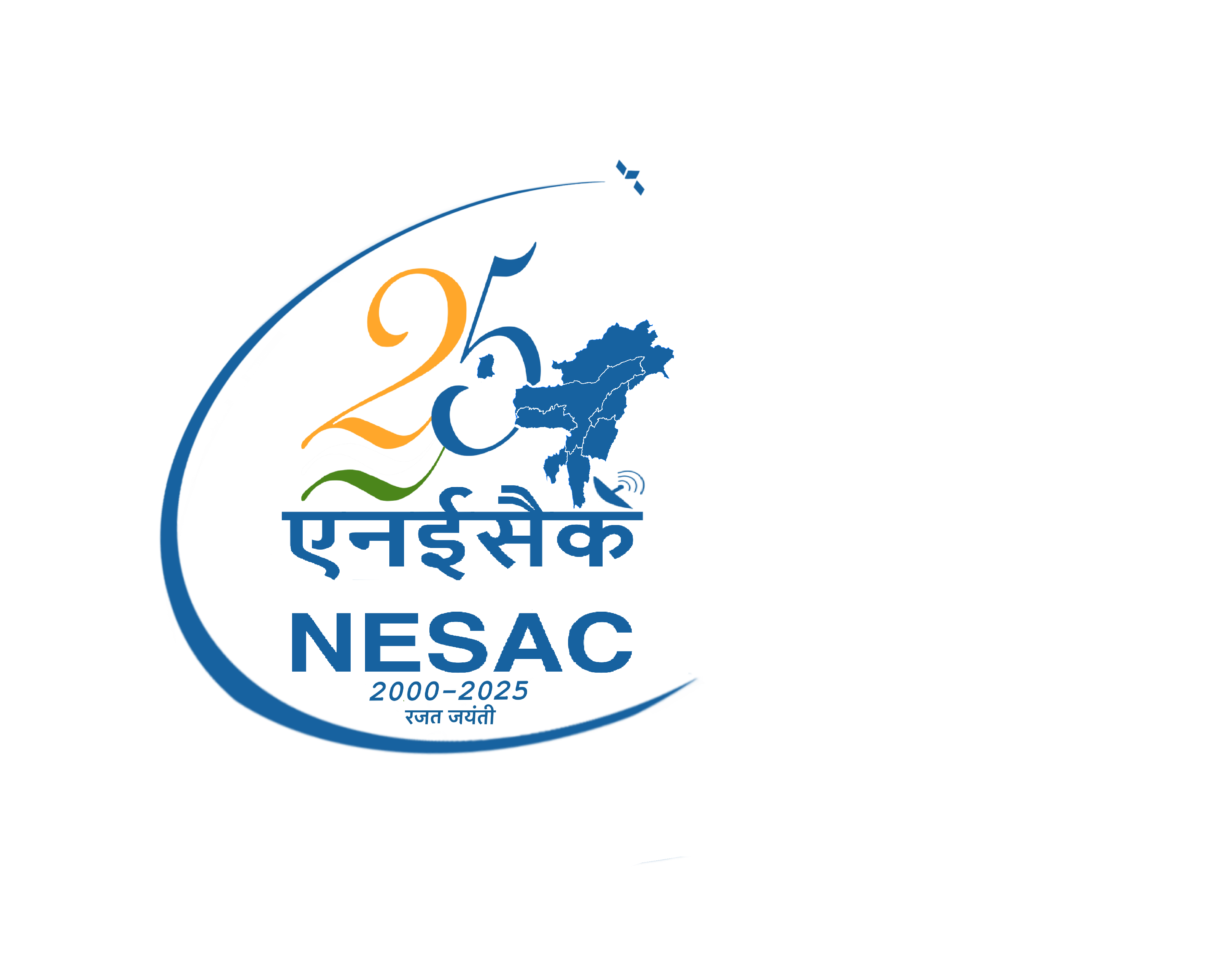The main focus of Geoscience under Remote Sensing and GIS (application areas) is to cater the need of the NE Region by using core Geological knowledge in combination with latest technology. And also to provide professional training, inputs and support to state (user) departments dealing with Geo-sciences applications, such as mineral exploration, engineering geological survey for tunnels and dams, road alignment, GNSS Surveying and groundwater exploration etc. Number of research and operational projects in different fields of geological sciences have successfully executed & completed. It has also completed no. of user specific projects of various state & central government organization. The thrust areas includes Landslide, Environmental Hazards, Mine Mapping, Ground Water, Road alignment, Active Tectonic and Crustal Deformation, Earthquake Precursors, SAR interferometry, hyperspectral and thermal image analysis.
Geo-Sciences
National Mission Participation
Involved in various national projects of societal importance initiated by ISRO/DOS. A few of the projects are:
- Landslide hazard zonation along Shillong-Silchar-Aizawl National Highway Corridor
- Seasonal Landslide Inventory Mapping (SLIM)
- Groundwater Prospects Mapping
- Groundwater Quality Mapping -under National Rural Drinking Water Mission
- National Geomorphology and Lineament Mapping (NGLM)
- Use of geoinformatics in rural road projects under PMGSY
Disruption in communication links, loss of life and properties are common phenomena in the hilly areas of NER due to landslides which are mainly induced by the seasonal rainfall. However, large catastrophic events are rare, but small movements are persistent and widespread, producing significant long-term economic losses. Identifying potential areas of landslide occurrences scientifically and understanding the rainfall pattern may provide valuable information for the State and Central Govt. organizations and local NGOs engaging in combating such damaging phenomena. It may also be an essential input in their planning, management, and mitigation programme.
Groundwater is an important source of water supply. To meet the demand with the increasing population for drinking and domestic purposes, industrial and agriculture use, identification of potential areas is an important source of information for planners and decision-makers. Groundwater prospect maps provide information on the potential regions and also help in narrowing down the target zones and sites for the construction of recharge structures for concerned organizations such as Water Resources, Public Health Engineering Dept. and others. Moreover, quality mapping provides another added information for human health and safety measures.
In order to monitor the status of the road connectivity, geo-spatial technology-based approach is used in PMGSY project, enabling efficient monitoring of road construction. A spatial database generation on road connectivity with respect to habitations connected as on the date of the satellite overpass was mapped that will enable the rural development ministry to monitor and identify unconnected roads.
User Support
Provide support & guidance to government departments, private sectors, and NGOs on the requirements of space technology inputs in their respective planning and developmental activities. It also actively carries out user-specific projects based on the need. Some of the user projects are:
- Hazard Risk Vulnerability Assessment (HRVA) Guwahati City, Silchar, Dibrugarh Towns and Dhemaji District, Assam
- Landslide Hazard Zonation and reservoir rim stability studies for SLP, Arunachal Pradesh
- Route Alignment Planning from Dumro to Same Basti, Upper Siang and Lower Dibang Valley Districts, Arunachal Pradesh
- Feasibility study for a proposed bridge across Lohit River near Dhola, Assam
- Route Alignment Planning from Dungrei to Pfutsero, in the state of Manipur and Nagaland
- Geospatial inputs for the development of Meghalaya Zoo near Umtru River, Ri-Bhoi District, Meghalaya.
- Geospatial database inputs for planning and restoration of the areas affected by coal mining in the State of Meghalaya
- Surveying of Mining Lease Boundaries of the Star Cement Mines, East Jaintia Hills, Meghalaya using Differential Global Positioning System (DGPS) Techniques
Multi-Hazard analysis, along with vulnerability, associated risk and its assessment (HRVA), is becoming one of the important task for preparedness and essential inputs in mitigating the disasters. The analysis results of HRVA may be utilized for various purposes such as emergency preparedness and response, improving safety measures, trial mock drill, and direction of an evacuation plan for the general public by district authorities, SDMAs, disaster response force etc. It may also be used for site selection of infrastructure development and installation of new facilities by the planners.
Planning for developing a new route to connect between two endpoints or places is based on various factors such as the terrain condition, socio-economic, administrative, and strategic importance of the area. Comprehensive studies of these factors and their interrelationship can be analyzed using space-based technology and Unman Aerial Vehicle (UAV) more precisely in the spatial domain. Route alignment studies was carried out for Border Road Organization, and the output will be utilized in the preparation of DPR.
Indian Bureau of Mines (IBM), Ministry of Mines, Government of India has issued guidelines for the preparation of mining lease maps using DGPS techniques. NESAC taken up the project “Surveying of Mining Lease Boundaries Using Differential Global Positioning System (DGPS) Techniques” and was funded by Star Cement Ltd. DGPS survey was carried out on the existing boundary pillars together with the establishment of one reference point/ benchmark inside the mining lease premises. The information provided by NESAC has been used for granting mining activity by the Indian Bureau of Mines (IBM).
In-House
Actively engaged in R & D and Technology Demonstration projects as an in-house activity in order to achieve indebt knowledge and understand various requirements where space technology can be effectively utilized for societal benefits. Some of the important activities are highlighted below:
- GPS based TEC for Earthquake Precursor for understanding Seismicity in Shillong Plateau
- Analysis of the large network of Continuously Operating Reference Stations (CORS) data to study the spatial distribution of the electrons in the ionosphere before earthquakes
- Road network gap assessment and alignment for new roads in Ri-Bhoi district, Meghalaya
Earthquakes in North East Indian region and surrounding were analyzed for earthquake precursor detection using GPS based Total Electron Content (TEC) estimation in the Ionosphere. Investigations confirmed TEC anomalies before earthquakes with a reasonable rate of success. In order to develop a relationship between TEC variations and epicentral distance of earthquakes, a large network of data is also being analyzed.
Future Initiatives
Looking forward to study various other aspects of space technology applications that may utilized as an essential inputs in disaster mitigation planning. Some of the proposed activities are as follows:
- Active tectonics and Crustal deformation study in NER
- Development of cost effective sensors to generate site specific early warning of Landslide(s)
- Landslide Susceptibility Mapping and development of Rainfall Induced Landslide Early Warning System (LEWS) in NER
- Industrial hazard assessment for offsite emergency planning, response, and management of major accident hazard (MAH) units in NER.
Active tectonics and Crustal deformation study in NER will help us understand geodynamics of the region. It shall also give vital information about the crustal stress accumulation in the regions that may be responsible for potential earthquakes in near future. The study shall be a useful inputs for disaster mangers such as NDMA, NIDM and SDMA.

